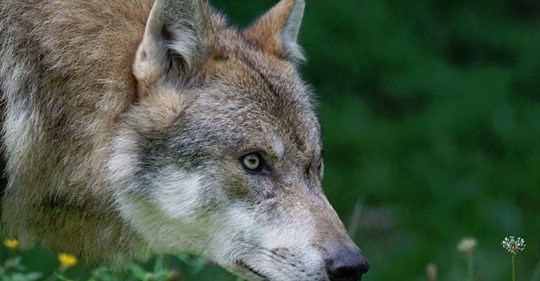The cost of the Flemish government’s wolf-protection plan last year came to €152,207, environment minister Zuhal Demir (N-VA) revealed in answer to a parliamentary question.
The government introduced its wolf plan in January last year, nine months after the arrival of a pair of wolves in Limburg province – one of whom died in a road accident – and shortly before the birth of four cubs. The plan consisted of measures to protect the wolves, as well as compensation for livestock killed by the predators, and subsidies for the placing of protective fencing.
Half of the cost, €76,789 went on subsidies for fencing, although only 119 of the total of 1,455 livestock farmers in the province have so far taken up the offer. Farmers complain that the subsidy does not cover the cost of installing and maintaining a fence.
The association of Flemish sheep farmers calculates that a piece of land of one hectare would cost €2,050 in fencing and €1,000 in labour to install, as well as €660 a year to maintain – a total of €3,710, compared to a subsidy of €1,640.
But the farmers are caught in a dilemma: if they do not install fences, there will soon no longer be any compensation paid for animals killed by the wolves.
Subsidies for dead or injured livestock came in 2020 to €16,229, compared to €10,287 in 2019 and only €2,990 in 2018, and a reflection of the arrival of the wolf cubs and the change in the diet of the wolves from wild game to livestock.
Another €27,150 was spent on DNA analysis carried out in every case of a wolf attack, to exclude other causes including dogs. The last major expense was €26,348 for cameras to keep track of the wolves’ movements.
According to Steven Coenegrachts (Open VLD), who asked the question of Demir, the bill is too high.
“The costs are mounting, and we have to keep a close eye on that, it must not become excessive,” he told Het Belang van Limburg.
“We rightly put a lot of money into wolf-resistant enclosures, and we have to teach the wolf to hunt game and not to bite sheep to death, but there is so much more to do outside the wolf in the field of biodiversity. And people still live here too, the wolf also has to adapt to us.”
For Jan Loos, on the other hand, the sums paid out of the public purse for the wolf are “peanuts”. Loos is the managing director of the nature non-profit Landschap, and creator of the wolf-watching website Welkom Wolf.
Not that the province has much choice.
“The wolf has chosen to live in Limburg, and we have to adapt to that. Whether we like it or not: the wolf has now been a resident of Limburg for three years and enjoys the highest European protection,” he said.
Alan Hope
The Brussels Times

